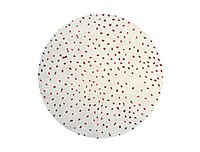
Photo from wikipedia
Brucellae are intracellular sneaky bacteria and they can elude the host’s defensive mechanisms, resulting in therapeutic failure. Therefore, the goal of this investigation was to rapid identification of Brucella species… Click to show full abstract
Brucellae are intracellular sneaky bacteria and they can elude the host’s defensive mechanisms, resulting in therapeutic failure. Therefore, the goal of this investigation was to rapid identification of Brucella species collected from animals and humans in Saudi Arabia, as well as to evaluate their resistance to antibiotics. On selective media, 364 animal samples as well as 70 human blood samples were cultured. Serological and biochemical approaches were initially used to identify a total of 25 probable cultured isolates. The proteomics of Brucella species were identified using the MALDI Biotyper (MBT) system, which was subsequently verified using real-time polymerase chain reaction (real-time PCR) and microfluidic electrophoresis assays. Both Brucella melitensis (B. melitensis) and Brucella abortus (B. abortus) were tested for antimicrobial susceptibility using Kirby Bauer method and the E-test. In total, 25 samples were positive for Brucella and included 11 B. melitensis and 14 B. abortus isolates. Twenty-two out of 25 (88%) and 24/25 (96%) of Brucella strains were recognized through the Vitek 2 Compact system. While MBT was magnificently identified 100% of the strains at the species level with a score value more than or equal to 2.00. Trimethoprim-sulfamethoxazole, rifampin, ampicillin-sulbactam, and ampicillin resistance in B. melitensis was 36.36%, 31.82%, 27.27%, and 22.70%, respectively. Rifampin, trimethoprim-sulfamethoxazole, ampicillin, and ampicillin-sulbactam resistance was found in 35.71%, 32.14%, 32.14%, and 28.57% of B. abortus isolates, correspondingly. MBT confirmed by microfluidic electrophoresis is a successful approach for identifying Brucella species at the species level. The resistance of B. melitensis and B. abortus to various antibiotics should be investigated in future studies.
Journal Title: PLoS ONE
Year Published: 2022
Link to full text (if available)
Share on Social Media: Sign Up to like & get
recommendations!